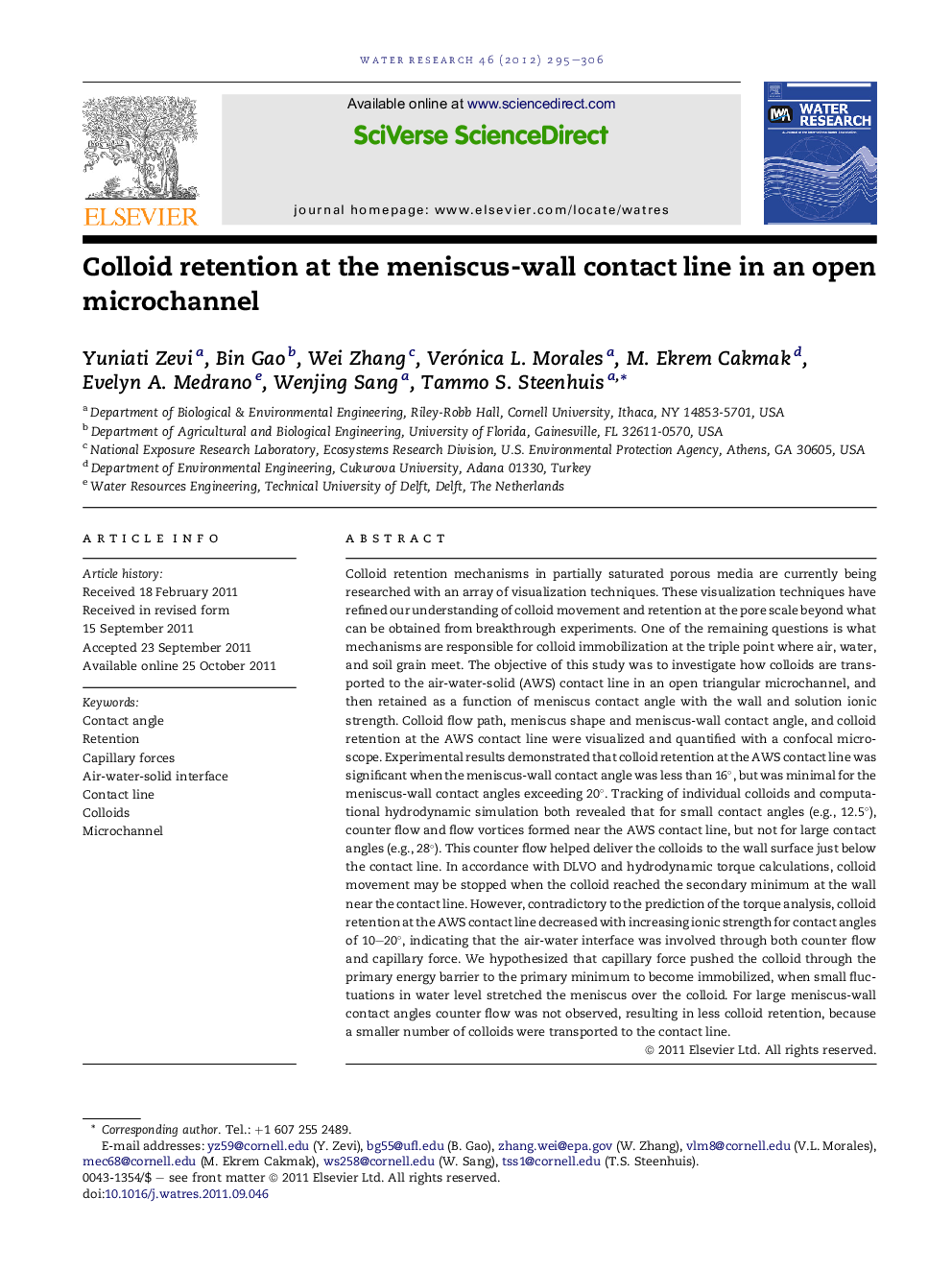| کد مقاله | کد نشریه | سال انتشار | مقاله انگلیسی | نسخه تمام متن |
|---|---|---|---|---|
| 4482387 | 1316857 | 2012 | 12 صفحه PDF | دانلود رایگان |

Colloid retention mechanisms in partially saturated porous media are currently being researched with an array of visualization techniques. These visualization techniques have refined our understanding of colloid movement and retention at the pore scale beyond what can be obtained from breakthrough experiments. One of the remaining questions is what mechanisms are responsible for colloid immobilization at the triple point where air, water, and soil grain meet. The objective of this study was to investigate how colloids are transported to the air-water-solid (AWS) contact line in an open triangular microchannel, and then retained as a function of meniscus contact angle with the wall and solution ionic strength. Colloid flow path, meniscus shape and meniscus-wall contact angle, and colloid retention at the AWS contact line were visualized and quantified with a confocal microscope. Experimental results demonstrated that colloid retention at the AWS contact line was significant when the meniscus-wall contact angle was less than 16°, but was minimal for the meniscus-wall contact angles exceeding 20°. Tracking of individual colloids and computational hydrodynamic simulation both revealed that for small contact angles (e.g., 12.5°), counter flow and flow vortices formed near the AWS contact line, but not for large contact angles (e.g., 28°). This counter flow helped deliver the colloids to the wall surface just below the contact line. In accordance with DLVO and hydrodynamic torque calculations, colloid movement may be stopped when the colloid reached the secondary minimum at the wall near the contact line. However, contradictory to the prediction of the torque analysis, colloid retention at the AWS contact line decreased with increasing ionic strength for contact angles of 10–20°, indicating that the air-water interface was involved through both counter flow and capillary force. We hypothesized that capillary force pushed the colloid through the primary energy barrier to the primary minimum to become immobilized, when small fluctuations in water level stretched the meniscus over the colloid. For large meniscus-wall contact angles counter flow was not observed, resulting in less colloid retention, because a smaller number of colloids were transported to the contact line.
Figure optionsDownload high-quality image (133 K)Download as PowerPoint slideHighlights
► Colloid transport to the air-water-solid (contact line) interface is investigated.
► For contact angles less than 16°, colloid are retained at the contact line.
► For contact angles greater than 20°, colloid retention at the contact line is minimal.
► Counterflow is main mechanism to bring colloids close to contact line after which they can attach.
► Numerical simulations confirmed that counterflow occurs at small contact angles.
Journal: Water Research - Volume 46, Issue 2, 1 February 2012, Pages 295–306